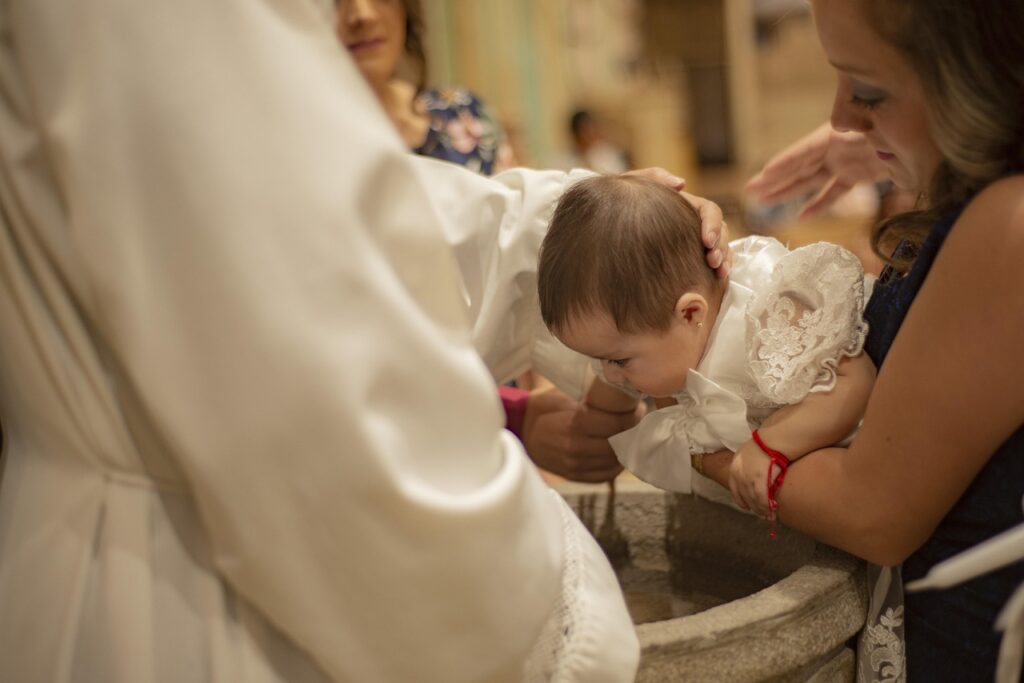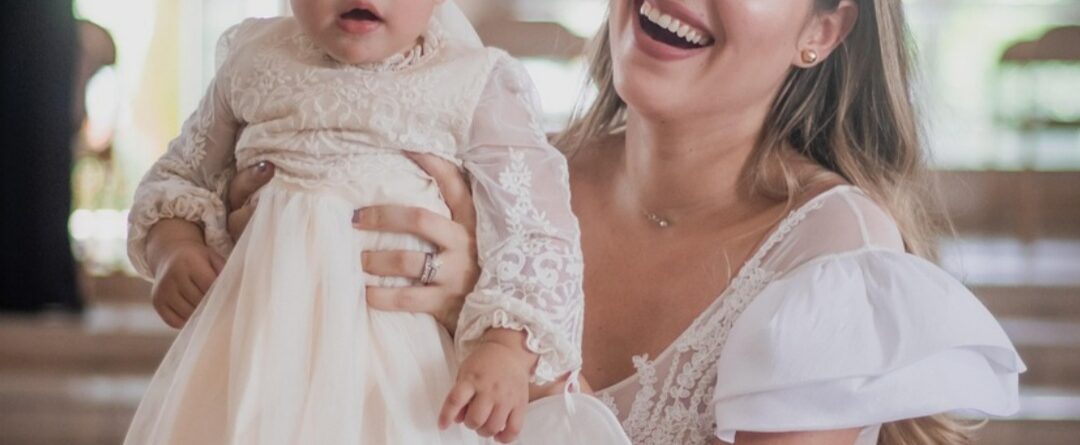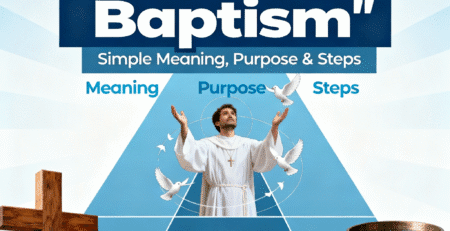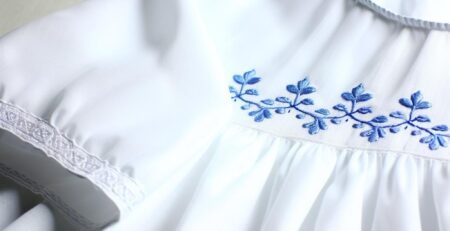Soft morning light filters through stained glass, powdering pews and tiny folded hands-an event that’s equal parts celebration and quiet reverence. A christening asks us to dress not only for the moment but for the mix of traditions, family expectations, and practical realities that accompany it: a church or registry office, chilly stone floors or a sunlit garden, a formal reception or an intimate tea afterward.
Choosing what to wear means balancing respect and personal style. Think modest silhouettes and muted palettes as your baseline, then layer in texture, weather-appropriate fabrics, and accessories that suit your role: godparent, parent, or guest. This guide will help you navigate dress codes, seasonal tweaks, and cultural considerations so you arrive feeling cozy, appropriate , and ready to celebrate without stealing the spotlight from the day’s small, bright hero.
Table of contents
- Interpreting the Dress Code: Formal Church Rules Versus Casual Family Celebrations
- Fabric Fit and Footwear: Practical Choices for Comfort, Modesty, and Photographs
- Dressing the Child: Christening Gowns, Safe Layers and Sentimental Accessories
- Color Patterns and Accessories That Respect the Ceremony and Look Great in Photos
- Weather Timelines and afterparty Attire: Planning Outfits for the Whole Day
- Q&A
- Insights and Conclusions
Interpreting the Dress Code: Formal Church Rules Versus Casual Family Celebrations

Think of the ceremony as a respectful pause: churches frequently enough favor modest, understated attire-covered shoulders, knee-length or longer hemlines, and muted colors that let the moment, not your outfit, take center stage. Many congregations appreciate conservative cuts and minimal skin exposure; check the specific church’s guidelines if possible. Simultaneously occurring, remember that christenings are family celebrations too, so you can nod to warmth and personality with gentle patterns, soft textures, and thoughtful accessories rather than loud or flashy statements.
Bridging the two worlds is where creativity shines: choose layers (a blazer or shawl) to respect the sanctuary, then remove them for a relaxed reception; opt for comfortable shoes that still read polished; and avoid white if you’re a guest so the baby’s christening gown remains the focal point. For godparents or parents, subtly elevated choices-clean lines, tasteful jewelry, and fabrics that photograph well-honor the ceremony without feeling stiff. Below are rapid, practical cues to help you decide.
- Do pick breathable fabrics for long services and photos.
- Don’t upstage the family with overly dramatic colors or sequins.
- Do bring a wrap or jacket to enter the church respectfully.
- Don’t wear shoes that will leave you wincing at the reception.
| Setting | Typical Choice | Why it works |
|---|---|---|
| Church | Mid-length dress or tailored suit | respects tradition and photographs well |
| Family Reception | Relaxed separates or soft knit dress | comfortable for mingling and childcare |
| Both | Neutral palette + one personal accent | Balances reverence with celebration |
Fabric Fit and Footwear: Practical Choices for Comfort, Modesty, and Photographs
Choose fabrics and cuts that breathe, move, and photograph well - think lightweight linens, softly structured cotton blends, and silk blends with a bit of body. Aim for garments that skim the shape rather than cling; a gentle A-line dress or a slightly tapered blazer over a modest blouse keeps lines clean and flattering in group shots. Lining and sleeves matter: a lined skirt prevents awkward transparency under flash, and three-quarter or cap sleeves offer coverage without overheating. Consider subtle textures (matte crepe, fine dobby) which hide wrinkles on camera better than glossy finishes.
Footwear should balance style with steadiness: low block heels, polished flats, or dressy loafers are your best friends. Break in new shoes beforehand and pack a small emergency kit (clear gel pads, a spare pair of insoles) to avoid discomfort mid-ceremony. Quick checks to run through before leaving the house:
- Grip: non-slip soles for steps and church floors
- Silhouette: shoes that complement the hemline for flattering photos
- Practicality: easy on/off if a last-minute outfit change is needed
Below is a simple comparison to help decide at a glance:
| Type | Comfort | Photo-Amiable |
|---|---|---|
| Low block heel | High | Elegant, elongated legs |
| Polished flat | Very high | Casual-chic, stable |
| Loafer | High | Modern, gender-neutral |
Dressing the Child: Christening Gowns, Safe Layers, and Sentimental Accessories
Choose a christening ensemble with the child’s comfort and safety at the center: opt for breathable natural fabrics (cotton, linen, silk blends) and soft linings that prevent overheating under church lights or during photographs. Layers are your friend – a lightweight slip or romper beneath a flowing gown keeps tiny knees warm without adding bulk, and removable capes or shawls give you temperature control without compromising the silhouette. Keep fastenings simple and secure – snap closures and covered zippers are safer than loose ribbons or long ties, and avoid small decorative beads that could become choking hazards.
- layer: Cotton slip or bodysuit for warmth and modesty
- Secure fastenings: snaps or buttons with sewn shanks
- Temperature control: Removable shawl or light cardigan
- Heirloom-ready: Choose a gown with a removable keepsake panel
Sentimental accessories can add meaning without complicating safety: a tiny bonnet, a sewn-in name tag, or a simple locket pinned to inner layers preserves family tradition while staying out of reach. If you want to incorporate heirloom pieces, consider attaching them to an inner lining or photographing them separately to avoid loose parts during the ceremony. For visual harmony in photos, pick one small statement accessory – a lace bonnet, embroidered blanket, or christening pin – rather than multiple trinkets.
| Layer | Purpose | Quick Tip |
|---|---|---|
| Slip | Modesty, warmth | Choose cotton with gentle elastic |
| Outer gown | ceremony look | Secure seams and covered fasteners |
| Shawl/blanket | Temperature & keepsake | Remove for photos if too bulky |
Color Patterns and Accessories That Respect the Ceremony and Look Great in Photos
Choose palettes that honor the solemnity of the day while flattering skin tones and camera sensors: soft neutrals, muted jewel tones, and gentle pastels read as elegant and photograph consistently across different lighting. Fabrics with subtle texture – think lace trims, fine linen, and soft satin – add depth in photos without shouting for attention. Steer clear of bright neons, large logos, or stark whites (opt for ivory or cream rather) to avoid blown-out highlights and distracting reflections; small, coordinated contrasts between baby and adults will keep the group visually unified and respectful.
- Ivory & Dusty Blue – classic and warm on camera
- Sage Green & cream – calming, modern, and soft in portraits
- Blush Pink & charcoal – romantic balance without overwhelming
Accessories should tell a quiet story: choose subtle heirlooms, matte metals, and small accents that complement the outfit rather than dominate it. For babies, a simple bonnet or a linen blanket with a delicate trim keeps focus on the face; for adults, understated cufflinks, a slim watch, or a single brooch reads as reverent and tasteful. Avoid jangly jewelry, oversized hats, or reflective belts that catch flash – the goal is graceful detail that enhances the moment in photographs.
| Accessory | Why does it effectively work | Photo tip |
|---|---|---|
| Pearl Studs | Timeless, close to the face | Avoid dangly pieces that move |
| Lace Bonnet | Frames the baby’s face softly | Choose soft tones to prevent glare |
| Pocket Square | Subtle color pop for men | Fold simply; match , but don’t match exactly |
Weather Timelines and Afterparty Attire: Planning Outfits for the whole Day
Plan your layers as if you’ll be photographed three times: arriving at the church, posed family portraits, and dancing at the afterparty. Start with breathable fabrics (linen blends or lightweight wool) under a smart outer layer, so you can remove or add without losing the polished look. Choose shoes that strike a balance – comfortable flats or low block heels for the ceremony and a sleek pair of heels or dressy sneakers to change into for the evening. Don’t forget a compact waterproof option if rain is highly likely; a tailored trench or a refined umbrella can keep you dry without spoiling your outfit.
Pack a tiny kit to handle transitions and surprises:
- Foldable blazer or shawl for the ceremony
- Slip dress or versatile skirt that layers well
- Change of shoes (heels or stylish sneakers)
- Travel-size stain remover and safety pins
- Small clutch with essentials for the afterparty
These simple swaps let you move from formal to festive in minutes while staying comfortable in any weather.
| Time | Quick Outfit Tweak |
|---|---|
| Morning service | Add a blazer, keep accessories minimal |
| Portraits / Photos | Remove the outer layer for cleaner lines |
| Afterparty | Swap to fun shoes, add a bold clutch or statement earring |
Q&A
Q: What’s the overall dress code for a christening?
A: Aim for polished, respectful, and slightly celebratory – think “smart Sunday best” rather than casual weekend wear. Churches and other religious venues usually favor modest, neat outfits; receptions can call for dressier or more relaxed looks, so check with the hosts if you’re unsure.
Q: Can I wear white?
A: Traditionally, white is reserved for the baby and sometimes the immediate family. As a guest, it’s polite to avoid all-white outfits that might draw attention away from the child, though small white accents are fine.
Q: What should parents wear?
A: Parents can be a bit more dressed up than guests, but still understated. Women often choose a midi dress, tailored separates, or an elegant blouse and skirt; men typically wear a suit or blazer with trousers. Comfort matters – you’ll be lifting, holding, and smiling a lot.
Q: What do godparents typically wear?
A: Godparents should dress respectfully and slightly more formally than other guests, as they play a key role. A smart dress,skirt-and-top, tailored suit, or dressy jumpsuit communicates the occasion’s importance without being flashy.
Q: What should the baby wear?
A: Many babies wear a conventional christening gown, but modern alternatives include a special white or neutral outfit, a lightweight romper, or a delicate dress. Choose something easy to change and comfortable for the child; fabrics that breathe and fasten easily are best.
Q: Are there color rules?
A: Soft neutrals, pastels, and muted tones are safe and elegant. Bold colors are acceptable if tastefully done, but avoid loud prints or neon shades that can feel jarring in a sacred setting.
Q: How modest should my outfit be for church?
A: Modesty expectations vary by denomination, but as a rule cover shoulders and avoid overly low necklines or very short hemlines while inside the place of worship. If you’re unsure, bring a lightweight shawl or blazer to use during the service.
Q: Are there any fabrics to favor or avoid?
A: Favor breathable, wrinkle-resistant fabrics – cotton, silk blends, light wool, or quality synthetics. Avoid overly casual fabrics like distressed denim or beachy linen that look too casual; also, skip anything too clingy or clear.
Q: What about footwear?
A: Choose smart, comfortable shoes. Women can opt for low-to-mid heels, wedges, or polished flats; men should wear dress shoes or smart loafers. If the ceremony involves stairs or walking on grass, consider practical shoes.
Q: How should I dress for a church with specific traditions (Orthodox/Catholic/evangelical)?
A: Respect local customs: some Orthodox churches ask women to cover their heads and wear long skirts, while some Protestant communities are more relaxed. When in doubt, ask the officiant or hosts ahead of time and follow any posted guidance.
Q: Can I wear a hat or fascinator?
A: Small, tasteful hats or fascinators are fine, especially for formal or British-style events. Keep them modest so they don’t block views during the ceremony or overshadow the baby.
Q: Is it okay to wear bold jewelry or accessories?
A: Keep accessories tasteful and understated. One statement piece is usually enough; avoid noisy or distracting items that could interfere during prayers, songs, or photos.
Q: What should older children wear?
A: Dress them like miniature versions of adult guests: smart dresses or shirts with trousers, depending on age. Comfort and quick diaper- or potty-friendly outfits are practical, and bring a change of clothes in case of spills.
Q: What should I wear to an outdoor or summer christening?
A: Opt for breathable, light fabrics and sun-smart pieces: a linen blend dress or a lightweight suit, plus a hat and sunglasses for the reception. Consider the ground – wedges or block heels work better on grass than stilettos.
Q: Is black acceptable?
A: Black is acceptable and often stylish, though in some cultures black is associated with mourning. If the hosts or family have no objection, a black outfit can be dignified; pair it with soft accessories to keep the mood celebratory.
Q: Any etiquette regarding perfume or cologne?
A: Go light. Heavy scents can be overwhelming in close quarters, difficult for babies, and potentially problematic for guests with sensitivities.
Q: What should I avoid wearing?
A: Avoid jeans, gym wear, flip-flops, loud logos, excessively short skirts, plunging necklines, and anything that reads as too casual or attention-seeking. The aim is to honor the occasion and the family.
Q: How can I balance style with practicality?
A: Choose outfits with pockets, breathable fabrics, and layers. Neutral colors that hide small spills, shoes that combine polish with support, and garments that are easy to move in will keep you comfortable and composed.
Q: Should I change for the reception?
A: That depends on the formality of the reception. If it’s a relaxed family lunch, you can usually remain in your ceremony outfit. For a more formal celebration, a quick change into slightly dressier or more festive attire is appropriate – but still modest.
Q: What’s the single best piece of advice?
A: Ask the hosts if there’s a dress code and aim for respectful, understated attire that honors the ceremony and keeps the focus on the child. Think polished, comfortable, and considerate - the clothes should frame the moment, not steal it.
Insights and Conclusions
Choosing what to wear to a christening is really about striking a quiet balance: respect the ceremony and venue, consider any dress code or cultural customs, and then add a touch of your own style. Practical choices – comfortable shoes, weather-appropriate layers, and modest silhouettes – will keep you focused on the child being welcomed rather than on your outfit. Neutral tones, subtle patterns , and one thoughtful accessory are usually enough to feel polished without drawing attention away from the occasion.
Ultimately, let the purpose of the day guide you. When your clothes reflect consideration and calm, you’ll blend seamlessly into the ceremony’s spirit and be free to take part in the celebration itself.













Leave a Reply